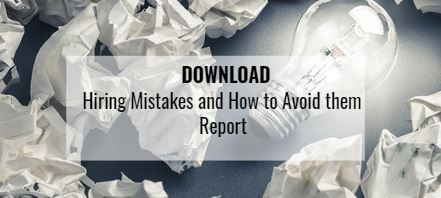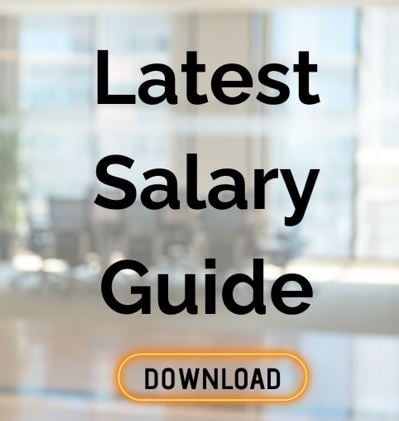Until recently, Diversity, Equity and Inclusion (DEI) was sometimes viewed as a ‘side project’ or an optional extra that some organisations focused on to give them the edge in the employer branding stakes.
But now, as the public’s appetite for equality grows thanks to widespread media and transparency movements, diversity and inclusion are something that employers can’t ignore any longer.
In a recent McKinsey report, DEI was highlighted as playing a significant role in the economy’s Covid recovery. The report states, “companies pulling back on I&D now may be placing themselves at a disadvantage: they could not only face a backlash from customers and talent now but also, down the line, fail to better position themselves for growth and renewal.”
So, how can employers do better?
Here we outline 8 Key Strategies for your Organisation to consider:
1. Create a Culture of Respect
An employer can be legally above board in terms of discrimination, and yet there can still be a culture where there is a lack of respect between employees. This is toxic and can be harmful to the progression of DEI.
Think about:
-
Do your management employ ‘old school’ work ethics, such as being overly harsh or critical in an effort to improve standards?
-
Is bad language tolerated in your workplace?
-
What well-known cliques operate in your company?
-
How developed is your employee’s emotional intelligence?
Creating a respectful culture is the first step to improving diversity and inclusion, as acceptance and tolerance, high emotional intelligence, kindness and consideration are all necessary for forward-thinking organisations.
Disrespectful behaviour should not be tolerated, and this message needs to come from the leadership team. Bullish tactics are not an acceptable part of the modern workplace and can lead to discriminatory territory.
2. Internal Training
Employers should also focus on training in any areas where employees need help to create a level playing field in terms of skills and career progression.
Offering excellent training programmes to all employees is one of the best ways to support people with different skills and abilities.
Be aware that individuals from different backgrounds will have different skill sets – a robust training programme is vital for equality. For example, would you encourage the same development opportunities in the part-time mother as opposed to the new graduate?
3. External Consultancy and Training
If you are going to provide training focused on DEI in your organisation, external training is the way to go.
Being trained in these areas by an in-house manager or colleague will lessen the impact compared to an external expert.
This is because it is easier for an internal trainer to sell the company perspective, whereas an external trainer is impartial. They can come into an organisation as a fresh pair of eyes, and they can make the call as to the best approach to highlight ‘potential problems’ they observe and can be more direct in their assessment and recommendations.
If you are commissioning a piece of training, it might not be possible to bring in an external trainer. Your company vision might currently be too narrow for the training to have any kind of impact. There first needs to be an environment where employees fully understand the importance of DEI.
An external trainer must act as a consultancy first to check that the training is even possible, find the gaps and then work out what this means in terms of training within the organisation.
An external trainer’s impartial viewpoint is necessary for DEI training to have a resounding effect. Have you looked into providing DEI training in your organisation? There are various providers across the country; do your research and call in the experts to make a real impact.
4. Genuinely Listen

In your company, would an idea or suggestion be treated with the same respect if it came from somebody at the bottom of the internal ecosystem instead of an executive?
Treating employees inclusively means giving them a voice.
This means listening to everybody at all levels and making organisational changes based on your team’s ideas. It might sound like a radical notion, but some employers do this to great effect.
Multinational Virgin is known for instigating debates among staff to drive innovation and create a better workplace. Ask yourself the following questions:
-
When was the last time someone in an entry-level position was asked for their input on a significant decision?
-
How did you demonstrate their opinion was valued?
-
When did you last act on an idea put forward by a junior staff member or someone new to your business?
5. Fair Career Progression Structures
Have structures in place which allow people to progress no matter what their background.
Businesses should not reward generalists over specialists in an unequal way. Most employees are specialists in their skills and abilities, but this very fact can hold them back.
Offer the same development opportunities to everyone; don’t be blinkered into thinking someone will do well over another based solely on their previous employment history and current skill-set.
Offering different people the same opportunities is necessary, but it needs to go further as a leader. It recognises that some individuals who previously have been discriminated against may not feel confident to put themselves forward. As leaders, we need to recognise talent, encourage it, and inspire people to put themselves forward.
At the highest level of your career progression strategy, make sure succession plans also represent your DEI policy.
6. Appraisals

There are a few ways you can build D, E & I into your performance management - consider the following:
-
Base performance on facts, always - sometimes factors such as gender or age can affect a manager’s ability to be objective in performance reviews. Continually assess performance expectations, and analyse whether reviews are in-line with data rather than opinions.
-
Use inclusive language – avoid using words or phrases which perpetuate stereotypes. For example, saying, “I was surprised that you did so well on this project, I didn’t expect that you would have such an interest in this topic” can limit employees’ beliefs that they can progress in areas they are not familiar with.
-
Ask for feedback, and listen – ask your team ‘what more could I be doing to help you be your authentic self at work’ and put into practice their suggestions.
Appraisals are often overlooked in terms of DEI, so it’s a good idea to re-evaluate them through the DEI lens.
7. Accountability
Accountability is something that many businesses lack, which mean it is an area for improvement if your company wants to embrace DEI.
There needs to be a recognition among all employees, from new starters to the CEO, that DEI is not an isolated construct but a core principle of your organisation.
There is also a recognition of the need to educate middle managers on different career progression routes. The older model of starting at the bottom and working your way up should now be challenged.
People study and progress in their careers differently now; you do not require decades of experience to be regarded as an expert any more.
Challenge your own beliefs and discuss your decisions with colleagues – championing diversity and inclusion is about having conversations that others might find uncomfortable.
8. Marketing and Communications
Marketing, both internal and external, has a significant role to play in improving DEI.
There can be discrimination built into the language we use every day, and there are ways we can modify our language to make it more inclusive.
For example, someone tells you a story about their lawyer; if you reply and assume that their lawyer is male, this is an example of the ingrained stereotypes we can challenge by changing our language.
Beth Dunn, UX Operations Lead at HubSpot in a Medium article, states, “Try not to present the privileged, tech-savvy, wealthy, able-bodied, white, cis-gendered, anglo-centric male experience as ‘standard’ and everything else as ‘other’ or ‘diverse.’ Seek ways to place the ‘other’ in the centre of things instead.”
It’s about challenging our own unconscious biases and striving to view the world through the eyes of those who carry less privilege.
Many marketing images are still laden with white, male business-like figures. Think about the language changes you can make in your internal communications and everyday language, as well as external marketing material.
Often companies will arbitrarily include a woman or a person of colour into their images to appear more diverse; if you’re trying to appear more diverse than you are, you are engaging in performative DEI.
Food for thought!
Can We Help?
We have placed and filled over 100,000 temp and permanent assignments over the last 29 years so have a range of techniques, ideas and platforms which could help you. Why not call us on 0113 367 2880 have a conversation with one of our team. Alternatively drop us an email here or check out are Testimonials and Case Studies.










.png)






